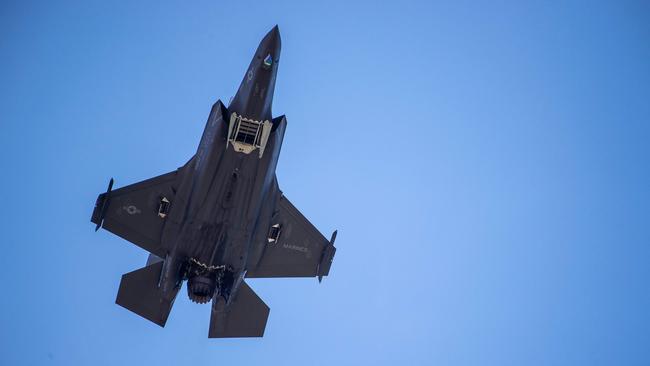Blistering speed of F-35 one of many issues
A coating that ‘blisters’ at supersonic speeds is among new problems identified with Britain’s stealth fighter jet.

A coating that “blisters” at supersonic speeds and cockpit pressure causing pilots sinus pain are among a raft of new problems identified with Britain’s multi-million-pound stealth fighter jet.
Nine serious “deficiencies” were detected in the F-35 jet of the Joint Strike Fighter, designed by the US aerospace giant Lockheed Martin, as it entered operational tests late last year, according to documents obtained by Defence News.
The problems also included a loss of control in certain manoeuvres and, in cold conditions, a system error that caused the jet to erroneously report that a battery had failed, sometimes forcing missions to be aborted.
Limitations in the sea-search mode of the F-35’s radar and difficulties in landing the jet vertically on very hot days were also among the issues that could put pilots and operations at risk.
Britain plans to buy 138 F-35 jets as part of a £9.1 billion ($16.6bn) package, but has taken receipt of only 17 so far. The squadron is based at RAF Akrotiri in Cyprus for testing. It is understood that the trials have not pushed the jets to extreme limits, so British forces have not experienced all the problems uncovered in US testing.
British defence insiders said yesterday that any piece of equipment as complex as the F-35 was likely to have teething problems. The American F-35 program cut the number of so-called Category 1 deficiencies from 111 at the start of last year to 13 by October, of which nine affect the “B” variant of aircraft that Britain has bought.
The latest problems emerged after the US congressional watchdog warned in a recent report that low stocks of spares, repair backlogs and mismatched parts had kept the American squadron grounded for 30 per cent of the time last year.
The first F-35s sent to the Middle East were able to fly, on average, only one combat sortie per plane every three days, although Lockheed Martin said the US Marines had told it that their F-35s had recorded readiness rates of 75 per cent.
The US military has admitted that the aircraft program has been “troubled”. Acting Defence Secretary Patrick Shanahan, a former Boeing executive, has described it as “f..ked up”.
The Pentagon revised its cost estimates for the program upwards by $US22bn ($31.7bn) in April.
The F-35 joint program office told Defence News that not all of the 13 deficiencies would be tackled before production is increased from 91 jets a year to 160.
British analysts have said there are doubts about Britain’s ability to meet its target deadline to deploy 12 F-35s on HMS Queen Elizabeth, the 280m aircraft carrier, by 2021.
Lockheed Martin said yesterday: “It’s important to note that all of the current deficiencies are … defined as having ‘a mission impact with a current workaround that’s acceptable to the warfighter’, and do not pose a safety-of-flight risk.”
A British Ministry of Defence spokesman said: “Our jets have always met the strict safety requirements set by both US and UK military safety authorities.”
Nine partner countries have invested trillions of dollars into the JSF, which will become the mainstay for the air forces of the US, Japan, Great Britain and Australia.
Australia’s planes were slated to arrive in 2013, but cost blowouts and capability doubts pushed the delivery back by five years. Australia will take delivery of another eight JSFs next year and by 2023 should have all 72.
The Times



To join the conversation, please log in. Don't have an account? Register
Join the conversation, you are commenting as Logout